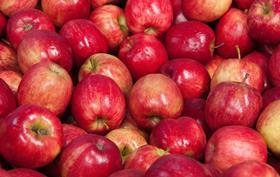
A study into consumer shopping and consumption behaviour during the Covid-19 pandemic has highlighted the value of Australian horticulture in helping Australian consumers obtain health and wellbeing through the benefits of fresh fruit, vegetables and nuts.
Hort Innovation worked with research company Fiftyfive5 to provide the Australian horticulture sector access to regularly updated information about consumer attitudes and behaviours during the time of Covid-19 disruption, through Fiftyfive5’s Category and Consumer Impact Monitor.
Hort Innovation chief executive Matt Brand said the pandemic had proven how important Australia’s horticulture sector is.
“Covid-19 has shown how valuable horticulture is to maintain a mentally and physically healthy nation,” said Brand. “I think people can see that and that’s why they support Australian growers, who continue to work hard and deliver produce through challenging times.'
The study also found Australian’s wanted to show their support for Australian growers by purchasing locally made produce.
Consumer insights
As consumers spent more time at home in lockdown, time spent on activities such as gardening, exercise, cleaning and cooking all increased.
The study found the rise in cooking from home – especially cooking from ‘scratch’ – meant that fresh, quality, Australian ingredients instantly became more important.
Across the nine months that the monitor was running, Fiftyfive5 found the biggest concern Australians had was around their ability to find a job (50 per cent).
A similar proportion were worried about experiencing future waves and these concerns translated into concerns about health and wellbeing for themselves and their families.
These concerns, Fiftyfive5 said, had a profound impact on shopping and consumption behaviour.
“Lockdown had a profound impact on how we prepared food. No commuting and more time at home gave us the freedom to get creative in the kitchen,” reads the report.
“From sourdough to spaghetti sauce, Australians were getting busy making fresh food. Almost half (46 per cent) of main grocery buyers reported cooking more meals from scratch and over a third (38 per cent) reported doing more baking. This behaviour increased demand for fresh produce through retail channels.”
4 in 10 buying more fresh produce
The report also stated that Australians looked to fresh produce as core ingredients. Between March and December, on average 39 per cent more Australian grocery buyers reported buying more fresh produce as part of their shop.
Maintaining a healthy diet became even more important as gyms and restaurants temporarily closed, with 39 per cent of Australians wanting to cook more healthy and nutritious meals.
The research saw considerable momentum for staple fruits with 34 per cent reporting buying more bananas, 28 per cent buying more apples, and 23 per cent buying more oranges.
The purchase frequency for staple vegetables such as carrots (28 per cent), broccoli (25 per cent), and mushrooms (24 per cent) also increased.
Australian grown
The research also showed that provenance has become significantly more important (compared to before the start of the pandemic).
It found 60 per cent of main grocery buyers in Australia reported that being Australian grown had become more important when choosing fresh produce.
This trickled down to hyper-local purchasing, with 42 per cent of all main grocery buyers reporting a want to buy Australian fresh produce to support local farmers.
“The pandemic impacted every element of the Australian way of life and drove behaviour change which meant consumers interacted with horticulture through the consumption of fruit, vegetables and nuts with meal preparation at home,” said Brand.
“Hort Innovation was able to provide weekly overviews of the data and insights for growers, highlighting particularly interesting and noteworthy trends to help them prepare for the increases in domestic demand.”



